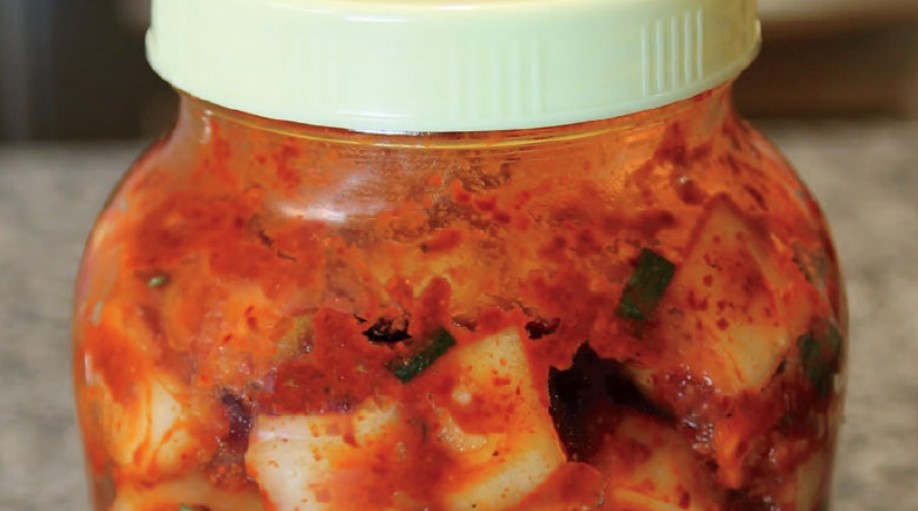Made from Korean radishes, this kimchi is juicy, spicy, crisp, cold, and just a little sweet. Kkakdugi is great when it’s fresh, but it’s even better when it ages. As it ferments, it gets sour, the spiciness deepens, and the ginger and garlic flavors get more complex. Kkakdugi is omnipresent on the Korean table and is an essential side dish for beefy soups like Beef and Sprout Soup or a spicy counterpart to Soybean Sprout Soup. When I serve the soybean sprout soup, I put some rice in my bowl, ladle some soup in, and top it off with some radish kimchi and a few spoons of the sour brine. The radishes should be firm and fresh, and the skin should have a slight sheen, with no bruises and a nice gradation between the white and
the green. The bigger the green part, the sweeter the radish. If you can’t get Korean radishes, use firm daikon.
Makes about 5 pounds
INGREDIENTS:
- 4 pounds Korean radishes (mu) or daikon, peeled, and cut into ¾-to 1- inch cubes
- 2 tablespoons kosher salt
- 2 tablespoons sugar
- 5 or 6 garlic cloves, minced
- 1 teaspoon minced peeled ginger
- 4 scallions, chopped
- ⅔ cup Korean hot pepper flakes (gochu-garu)
- ¼ cup fish sauce
INSTRUCTIONS:
- Combine the radishes with the salt and sugar in a large bowl, toss to coat, and let stand for 30 minutes to 1 hour.
- Reserve ⅓ cup of the liquid, then drain the radishes. Transfer them to another bowl and stir in the garlic, ginger, scallions, hot pepper flakes, fish sauce, and the reserved liquid. Mix well with your hands (use rubber
gloves, if you’d like). - Transfer the radishes to glass jars or other airtight containers, pressing on them with the back of a spoon to pack them tightly to avoid air pockets. Cover and let stand at cool room temperature until the kimchi tastes and smells sour (it might also bubble on the surface), 1 to 2 days, depending on the temperature of the room.
- Once the kimchi is fermented, store in the refrigerator to use as needed.


